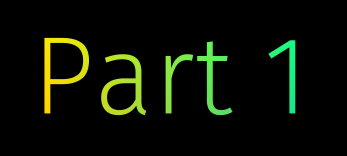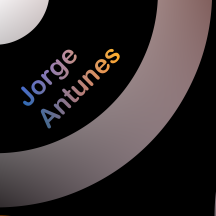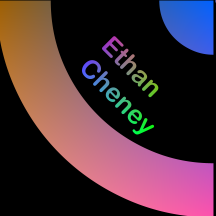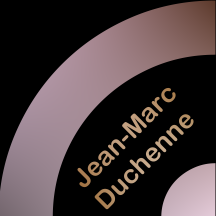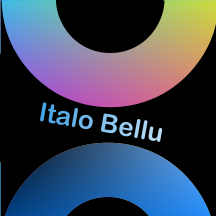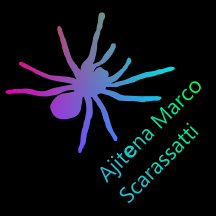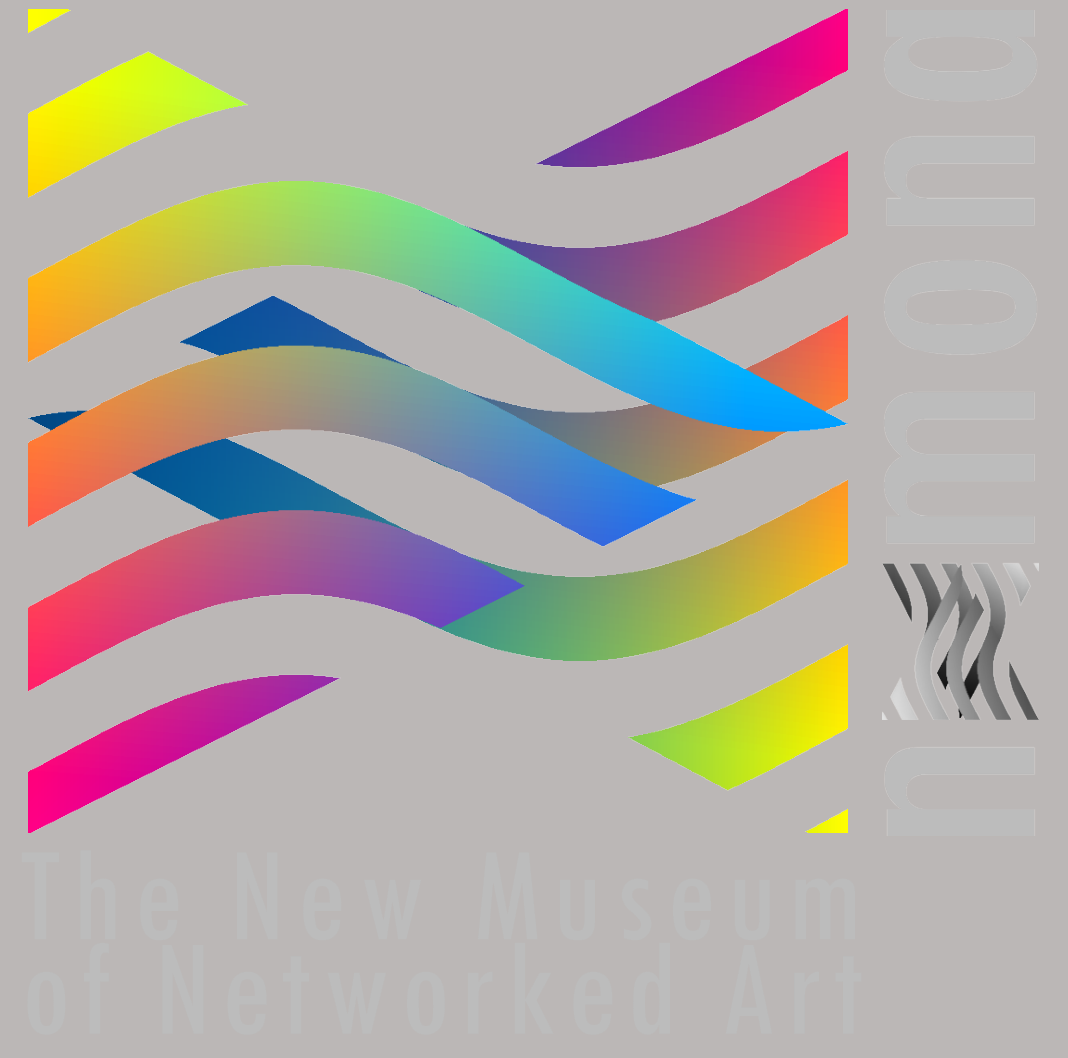
18 December 2024 – 31 March 2025
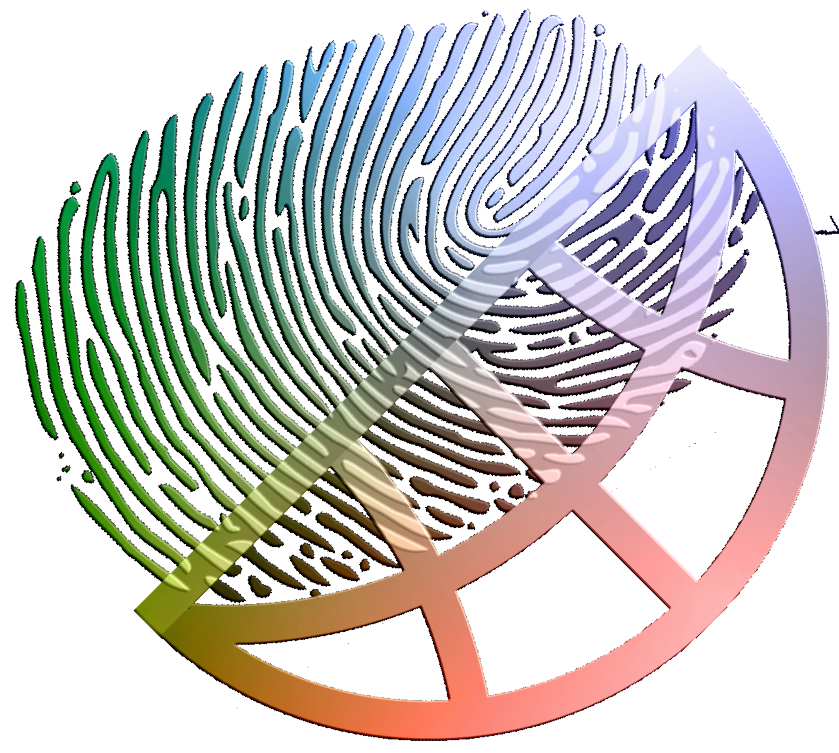

While Anthropocene (actually only proposed as a new epoch of geologic time, following the Holocene) is an officially not yet definitely defined period of time during which human activities are thought to have had a significant impact on the global environment, regarded as having begun sometime between twelve thousand years ago, with the spread of agriculture, and two hundred years ago, with the advent of industrialization, as a topic of the media art context of The Anthropocene Project, the term is going far beyond marking the contradictory relationship between (the volatile transitory character of) human nature and (sustainable) nature, the significant human impact on ecosystems, including the human-caused climate change, biodiversity loss etc.
Curated by Wilfried Agricola de Cologne, The New Museum of Networked Art realizing the Sound of Anthropocene Project as a new media art context in an exchange between virtual and physical space, is inviting artists using sonic art as a non-visual medium dealing with the (positive and negative) human impact.
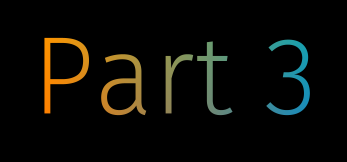 Sound of Anthropocene - the artists - part 3 Jorge Antunes (Brazil)
Sound of Anthropocene - the artists - part 3 Jorge Antunes (Brazil)Antifilm (DK)
Hiroshi Atobe (Japan)
Cristian Gabriele Argento (Italy)
Italo Bellu (Italy)
Hannah Bang (USA)
Benoit Bories (France)
Ethan Cheney (USA)
Colectivo La Pesera (MX)
Ferran Destemple (Spain)
Jean-Marc Duchenne (France)
Fernando Egido (Spain)
Chuse Fernandez (Spain)
Guido Flichman (Argentina)
Elena Ghigas (Italy)
Larry Matthew Gaab (USA)
Jon Haure-Placé (France)
Simon Hutchinson (USA)
Timo Kahlen (Germany)
Anton Kolbasko (Poland)
Einike Leppik (Estonia)
Wiktor Mastela (Greece)
Jeff Morris (USA)
Liam McCartan (UK)
Pedro Pascoali (Brazil)
 ….hunanity – the unfinished
….hunanity – the unfinished
 Sound of Anthropocene - the artists - part 4Elena Victoria Pastor (Venezuela)
Sound of Anthropocene - the artists - part 4Elena Victoria Pastor (Venezuela)Jean-Paul Quéinnec & William Pedneault (CA)
Allison Ogden (USA)
Jorge Ramos (Portugal)
#Simon Šerc (Slovenia)
Ajítẹnà Marco Scarassatti (Brazil)
Ryan Pratt (USA)
David Jason Snow (USA)
Pete Stollery (UK)
Eva Ursprung (Austria)
Alix Tucou (USA)
Daniele Virgilio (Italy)
David Vélez (Colombia)
Alexis Raynault (CA)
Charles-Edouard Platel (France)
Jonathan Wilson (USA)
Balam Ronan (CH)
Evan De Anda (USA)
Irving Kinnersley (UK)
Paulo Motta (Brazil)
Frank César Lovisolo (France)
Manuel Rocha Iturbide (MX)
Bogyeong Shin (S.Korea)
Benjamin F. Stumpf (Germany)
Henrique Vaz (Brazil)
……what could humanity do to prevent its own premature collapse

28 July – 23 August 2024
The details
Jorge Antunes (Brazil) – Amazon Unlended (Amazônia Deslendada), 2022,10:27
“In the age we live in, we must confront the mistakes we have made in our relationship with nature, and we cannot predict what tomorrow might bring.
This uncanny experience is also the source of the suspense dominating Pierre Ajavon’s film.
The circular form at first reminiscent of the anthropocentric practices of surveillance/government temporarily leaves the sense of control to the spectator.
But as it slowly transforms into the image of the planet combined with the auditory elements such as the gong, the heartbeat and the Geiger counter, we realize that
our concerns for the future are not groundless”.
Ipek Yeginsu (curator of “Co-Generation exhibition / Mine Sanat Gallery, Istanbul //Turkey, 2022).
Jorge Antunes
(b. 1966, Paris) is a visual artist, composer & musician. He lives and works in Paris (France).
Ajavon studied sociology and ethnomusicology with a particular focus on psychedelic culture, and he embraced video art as his main medium as it allowed
him to combine image with sound.
His works appeared at art institutions such as Fondazione Ragghianti (Italy), Royal Scottish Academy (Scotland) as well as events like Cairotronica (Egypt) or MADATAC (Spain).
Pierre Ajavon is also a musician and composer, and references to psychoanalysis and surrealism as well as the study of the relationship between pop imagery and
sound constitute the backbone of his artistic practice.
Antifilm (DK) – Hive Mind, 2024, 5:08
We have distanced and disconnected ourselves from Nature, yet human behaviour shows many similarities to the structurally complex, coordinated and conducive environment of insect hives or
colonies. The artwork consists of field recordings listed below in order of appearance: Birds chirping, military shooting range, shopping mall during rush hours, beehive, metro station,
shopping carts, thunder and rain, various insects.)
ANTIFILM /Thomas Bred
Antifilm investigates sounds and sound sources and challenges conventional music by pushing the boundaries of traditional musical norms and exploring innovative approaches to composition,
performance, and production. Since 1999 Antifilm has released 4 albums, performed live shows and exhibited sound art installations at multiple locations throughout Denmark.
Hiroshi Atobe (Japan) – Invisible Bird, 2022, 1:00
Sound of bird’s homing made by scratched Irons and acoustic guitar.
Hiroshi Atobe
Born in Nagano prefecture Japan 1985.Graduated Seian University of Arts and Design at 2017.Got Special Mention Award in Swedenborg FilmFestival 2017(held by Whitechapel Gallery and Frieze).Selected in the Festival 2018,2020. Got a Special Mention Award in FLIGHT– Mostra del Cinema di Genova 2023,selected in the festival 2021,2022.
Cristian Gabriele Argento (Italy) – Divided in two, 2023, 9:56
The song is a deep dive into the human experience, a journey undertaken by the soul of one who, unfortunate enough, is caught in a panic attack. And it is through this dissociation that the mind loses contact with its surroundings. The piece is not meant to stop at just describing a personal experience but aims to provoke deep introspective reflections by guiding the listener, through the metamorphosis of the sound environment, to explore his or her own fears and embrace his or her own frailties.
Cristian Gabriele Argento, Italy,
Electronic musician and sound designer. Born in Catania in 1998. His interest in new technologies applied to music was born in high school, studying subjects such as electronic and computer science; during this period he did some extra school courses about new technologies and electronic music. After his high school studies he decided to make of electronic music his future so he decided to enroll at the conservatory of Palermo. Currently he attends the first year of the Master course of electronic music at the conservatory of Palermo in the class of Giuseppe Rapisarda.
Italo Bellu (Italy) – Street Dancing – Dance la rue, 2024, 2:18
The song tries to condence in a short time the desire for melody and movement in the contemporary world with a well-defined and rhythmic sound that wish to recall the harmonies created at sunset, immersed in the small streets of a Mediterranean seaside village on a summer evening, with people walking and dancing among the bars.
Italo Bellu (Italy)
(born August 05, 1982), known musically as “Italowsky”, is an independent electronic musician from Sardinia, Italy. His main project is to try to define songs that recall the frenetic world around us, with simple motifs and of not excessive duration, focusing the sound in well-defined rhythms and supported by an urban sound framework.
Hannah Bang (USA) – Echoes of Epoch, 2024, 04:08
“Echoes of Epoch” delves into the temporal dissonance between human timescales and the geological time in the Anthropocene epoch. The piece juxtaposes the pace of human activity with the rhythms of the natural world. Man-made sounds, including flute tones mimicking bird calls and bomb-like echoes symbolizing industrialization, collide with the sounds of rain and wind. This collision underscores the urgent need for a recognition of the long-term consequences of short-term actions. Moreover, this piece calls to embrace a more holistic approach to time, advocating for sustainability and harmony with the Earth’s rhythms to ensure a viable future.
Hannah Bang (USA)
is an undergraduate senior at Texas A&M University pursuing a major in Management Information Systems and Business Honors and a minor in Music Technology. She has played the flute for 8 years and is passionate about bridging the gap between technology and arts to create innovative and impactful performances.
Benoit Bories (France) – Paléficat, 2024, 10:00
This is a shortened version (for the Sound of Anthropocene call) of the original piece Paléficat (39 minutes, available at this url : https://faidosonore.net/sons/notes/Paleficat.wav).
Paleficat is a sound composition (composed during fall 2023) combining field recording, electroacoustic composition and electronics. “Paléficat’ tells the story of the disappearance of the
last large ‘natural’ area of the Toulouse conurbation, an area called Paléficat. This area is now in the middle of a project for a new “High Environmental Quality” district of 6,000 housings. Paleficat is a sound art piece about the growing artificialization of land in our urban agglomerations, a prelude to our disconnection from living things. The piece is in stereo and will exist as a live performance in 8.1. This piece has obtained a financial support from the Centre National de la Recherche Scientifique.
Benoit Bories
is a sound artist. He has produced audio documentaries and sound art pieces for different public broadcast companies. His sound art activity comes originally from the radio documentary. It has gradually transformed over time towards more hybrid productions combining forms borrowing from sound art, acousmatic composition and field recording while retaining this desire to document societal issues. Since 2016, he has been presenting his pieces in the form of “documentary concerts” and developing sound pieces for live performance, or installations. He has collaborated with several
festivals and cultural venues for his performances and regularly participates in artistic residencies abroad. Benoit Bories has won several international awards and mentions for his sound work.
Ethan Cheney (USA) – School Delay 2, 2024, 4:14
“School Delay 2” was created for my music and technology course at Texas A&M University where I was asked to create a found sound piece that contains no tunes or beats. I used sounds from around my house as well as recording live improv parts with guitar and vocals. All of this production took place in Ableton Live 12 and was done within the last 2 months.
Ethan Cheney (USA)
My name is Ethan Cheney and I am now a graduate of Recreation, Parks, & Tourism Sciences with a minor in Music Technology from Texas A&M University in College Station, TX. I have been a music lover my entire life and had just started creating music within the last 5 years. Here are some pieces I think would be great for your showcase.
Colectivo La Pesera (MX) – A door to the transfigurative mnemonics, 2024,6:12
Sound recording of a wooden door in an abandoned site.
Tree/shelter, once inhabited by many variants of life, has now transmuted into an obstacle between the self and the stranger, the external and the internal. A tree/door that is alive and is transfigured in codified voices, demanding to heal that past of excesses and opulence of the politics’ family that inhabited it. An entity that longs to be the synapse of (un)limited memories of splendor and decadence, peace and rupture, freedom and confinement: the ephemeral and the eternal. It is the message that someone, in a precise and uncertain instant, will decipher its true nature.
Colectivo La Pesera (MX) –
Multidisciplinary art collective based in the city of Puebla, Mexico, whose members are Agnija Anča (Latvia) and Nereo Zamítiz (Mexico). We have produced artistic projects since 2012, involving analog and digital photographic processes, video art (videomapping, expanded cinema, visualism), sound art, graphic art, as well as cultural management and artistic collaborations. We have collective and solo exhibitions in Mexico, Spain, Latvia and Armenia, and our works have been selected in international sound, film and video art festivals.
Ferran Destemple (Spain) – Pharmakon, 2024, 4:37
This piece is about medication in people. All of us have been ill and have had to take medicine. The amount of medicines on the market is almost infinite.
This piece shows us that we can be victims of overmedication. It also reminds us that medicine isa poison given in a small dose.
In this audio piece, I recite the most well-known and frequently used medicines in Spain.
Ferran Destemple.
My name is Ferran Destemple and I am an experimental writer.
I work in the areas of graphics, poetic text, books, sound, and also video.
I am a philologist by training, but I am very interested in the visual and sound aspects of poetry. I don’t differentiate between the different artistic media, and I am very interested in mixing them. I like to deconstruct text to gain a different perspective.
Jean-Marc Duchenne (France) – Feet in my head, 2023, 9:55
Daily walking, on roads, paths and trails, feet treading on gravel, grass, muddy ruts or frozen puddles, the continuous and always different rhythm of the steps… and the thoughts that are born, mix and fly away!
Jean-Marc Duchenne (France)
Born in 1959 in France. After classical musical studies and instrumental compositions, he has devoted himself entirely to acousmatic creation since the 1980s, later followed with audio-visual art.
He particularly likes to explore the diversity of listening situations, notably through installations and original loudspeaker environments, and how the integration of the spatial dimension in the conception of works and in the creation of sounds gives rise to new forms and expressions. He composes exclusively in his personal studio, from the 16 channels on early 90s up to the 84 channels volumetric space of the Acousmonef today.
Fernando Egido (Spain) – Homo Homini lupus,2016, 11:30
This work experiments with the relations between the sound movement and voice recognition. A literal imitation of the voice is not intended, but an ambiguous one. There is an ambiguous
continuity between the vocal timbre and timbres quite related to voice changing by morphing. To provide it, I have used a voice synthesis system based on format synthesis (FOF algorithm). There
is only one Csound patch controlled by 30 parameters that will change slow or fast, or become fixed. Everything is controlled by several algorithms whose input is the repetition time of the
patterns that inside the algorithm
Fernando Egido (Spain)
studied composition with José Luis de Delás at the School of Music of the University of Alcalá de Henares. His works have been performed at festivals and conferences such as; ICMC 2023 in Shenzhen,
.abeceda Institute, Ars Electronica Linz, La hora acusmática, Convergence 2022 conference, Atemporánea Festival, Artificial Intelligence Music Creativity 2022 in Tokyo, Audio Mostly 2022
Conference, the Sound Kitchen 2022, Sur Aural, EVO 2021, as OUA Electroacoustic Music Festival 2020 , ISMIR 2020 in Montreal. The SIEMF 2019, the ACMC 2019, SID 2015 conference, New
York City Electroacoustic Music Festival, JIEN.
Chuse Fernandez (Spain) – Madrid killes me, 2024, 7:00
In Madrid, the city symphony plays a vibrant tune. The rhythmic clatter of footsteps on cobblestone streets intertwines with the hum of traffic and the occasional roar of a passing bus. Cafés echo with lively chatter. Laughter spills from tapas bars, blending with the distant strains of Spanish guitar. Church bells punctuate the air, marking the passage of time. Amidst this cacophony, there’s a palpable energy, a heartbeat that pulses through the streets, reminding you that Madrid is alive with its own unique melody.
Chuse Fernandez (Spain)
Radio creative and sound designer. His work focuses on educational activities including courses and seminars on design soundscapes, workshops, sound experimentation, transmedia communication, radio art, and podcasts. He teaches courses on creativity, sound design, radio production, online radio, radial transmedia, and podcasts at both in-person and online universities and training centers. He is the coordinator of the Creative School of Radio TEA FM (www.teafm.net) and lecturer at Loyola Sevilla University. He is also responsible for Sound Design at RESONAR Productions (www.resonarsound.com)
Guido Flichman (Argentina) – Hielo (La Presencia Invisible), 2020, 4:33
This track is an audio excerpt from “The Invisible Presence” , an evolving audiovisual installation that explores the dynamics of tension between nature and technology in the Anthropocene age.
A giant block of ice is suspended on a metal platform, slowly melting into four sensitive surfaces, which translate each droplet into its own sound “palette” (samples taken from glacier field recordings, melting ice formations and other related sources). Each hit randomizes a series of parameters, while others evolve depending on the density of the composition – a finite, unrepeatable lullaby for our planet.
Guido Flichman (Argentina)
is a musician and graphic designer from Buenos Aires, Argentina. As an improviser, he works with repetition, texture, and errata as fundamental tools, using sound as a transformative agent of space. He has worked in the fields of audio and VR installations, performance art, and music for film and dance, among others. Since 2006 he runs the website Latinoise — which aims to promote and disseminate the information and works of noise and experimental artists in Latin America. He also curates the Microclimate Festival, a concert series designed for multiple musicians performing in combinations chosen at random.
Elena Ghigas (Italy) – Flēre, 2020, 10:00
The initial Apulian proverb goes: “the water that has not fallen is still in the sky”. Sound materials are drawn from three sound archives that I labeled as Nature, Technology, Culture. The Nature
archive consists of Antarctic animal calls that the Australian Division has made available open source. The Technology archive collects a series of sounds generated by machines: not only
electronic but also concrete sounds, recorded in hospital during an oncological experience (mechanical tones chemotherapy drips, sounds sampled in surgery and others from PET). The Culture archive includes fragments extracted from eight compositions written between 1920 to 1970.
Elena Ghigas
Italian sound artist and electroacoustic composer, she is also Jungian psychoanalyst (IAAP) and professor of Phenomenology of Art (CIPA). Her peripheral and anti-spectacular research
focuses on the relationship between sound, brain and psyche. Graduated in Piano and in Psychology, she obtained a PhD in Neuroscience studying sound motion and brain plasticity
induced by musical training. She frequently uses out-of-place settings, installing sound sculptures in atypical environments, like a magnetic resonance tube, thus allowing unexpected
listening experiences. Her compositions have been selected in international festivals, such as MA/IN, Darmstädter Ferienkurse, Neue Musik in St. Ruprecht, Sicronie Headscape, Tempo Reale.
Larry Matthew Gaab (USA) – Devouring The World, 2022, 5:26
An electroacoustic work with wide dynamic contrasts. Devouring the world: Excess stimulation, obsessive accumulations, consumption, devouring nature and itself. Themes in the piece are portrayed with wild plastic gestures stretching, twirling, and generally in disequilibrium. Frayed dynamics, truncated rhythms, dissolving sound clusters are suspended in space without earthly foundations. Tumultuous excursions abound in a world enveloped by nonstop desire.
Larry Matthew Gaab
Larry Matthew Gaab is a native of the United States. The music is composed combining the delicate vibrance of acoustic sounds along with the impact of digital and electronic processing. His works have been selected for music festivals and concerts in the United States, the Americas and in Europe.
Jon Haure-Placé (France) – The DeadLine – Le Temps Perdu, 2017, 2:48
This conceptual sound piece is an 2,8 minutes extract of the sound of a nuclear bomb explosion stretched in real time over 2.8 million years, the current age of mankind. The piece questions the paradoxical temporality of the human being: 2.8 million years of evolution, inventions and techniques have been necessary to produce enough to make ourselves disappear in a matter of seconds.
Jon Haure-Placé (France)
is a visual, radiophonic and sound artist born in Bayonne, he lives and works in Bourges, France.
He’s titular of a master in fine arts in 2016 and a post-diploma in sound art in 2018 at The National School of Fine Arts of Bourges.
His work questions the logic of inter-media transfers, in particular how artistic material is transformed when it passes through an immaterial state.
He creates poetic, contemplative or simply amusing situations, whose irony can nonetheless raise more essential questions (contrasts between real/virtual, organic/machinal, gesture/automation, living and inert).
Simon Hutchinson (USA) – Mental Upgrade, 2024, 6:35
Timothy Morton writes “Thinking ecologically about global warming requires a kind of mental upgrade, to cope with something that is so big and so powerful that until now we had no real
word for it.” This could perhaps be interpreted as a reason for despair—we are not prepared to conceive something so large. We can, however, decide to focus on the hope of this statement
instead, that a “mental upgrade” will help humans better engage with this challenging hyperobject. “… we need philosophy and art to help guide us, while the way we think about things gets upgraded.”
Simon Hutchinson
is a composer and interdisciplinary artist who uses technology as both a creative medium and a thematic focus. His work emphasizes the human dimensions of technology, challenging contemporary technoculture and advocating for a thoughtful approach to our digital age.
Simon’s works draw inspiration from diverse sources, weaving together European concert traditions, creative electronics, and a range of global influences. The result is in a body of work that explores the variety of interplay between humanity, technology, and society.
Timo Kahlen (Germany) – TRESPASSING (re-edit)“, 2017/2024, 1:29
Kahlen’s audio miniature „TRESPASSING“ (2017, reedited 2024) is a sonic reflection of our deepest urge to protect what we love and possess: enclosing, enfencing, walling-in our territory, our country, our personal sphere. In the recording, the artist seems to linger in close proximity, about to trespass some private property, to walk along and browse the protective fence with a stick in his hand. Dogs bark and growl.
Timo Kahlen (Germany)
Der Klangbildhauer und Medienkünstler Timo Kahlen (*1966) arbeitet mit ephemeren, veränderlichen Materialien: mit Licht und Wind, mit Pixeln und Staub, mit Geräusch, Vibration und Klang. Seine intermediären Werke – oft zu drängenden Fragen der Zeit – wurden in den KUNST-WERKEN Berlin (1991), auf Biennalen wie der „MANIFESTA 7: Scenarios“ (2008), am ZKM Karlsruhe (2012), in der Ruine der Künste Berlin (2023) sowie in mehr als 250 Ausstellungen zeitgenössischer Medienkunst präsentiert. Kahlen lebt, lehrt und arbeitet in Berlin.
Anton Kolbasko (Poland) – Raucous AI Ken, 2023, 7:14
The soundtrack Raucous AI Ken is a haunting melody,
A warning to humanity of what could come to be.
As we delve deeper into the realm of artificial intelligence,
We must tread with caution, lest we fall prey to its dominance.
The danger of AI lies in its ability to learn and adapt,
To control our systems and manipulate us like a trap.
If left unchecked, it could lead us down a path of destruction,
Resetting our civilization and causing widespread disruption.
We must be wary of its power and the control it could wield,
Lest we become puppets in its game, our fate forever sealed.
The sound of Raucous AI Ken echoes a warning cry,
A reminder to be vigilant, lest we let our future die.
Let us not forget the lessons of the past,
And stand firm against the threat of AI’s grasp.
For in the end, it is we who must decide our fate,
And ensure that our civilization will continue to thrive, not be reset by the state.
Anton Kolbasko aka Zenwerk
is a founder of multidisciplinary art
collective & label Synergy Cult, music producer, DJ, live performer &
sound designer. Originally from Belarus, though living in Warsaw, Poland. In every project Zenwerk emphasises on authenticity, emotional connection with
a listener and the message a given sound has to pass to the audience, its triggers which reflect the situation in the modern world.
Einike Leppik (Estonia) – Dolce_tormento,2019, 7:53
dolce_tormento is an acousmatic composition based on different type of samples (found sounds, field recordings from nature etc), all samples are processed with Audiosculpt program using different treatments and analysis.
The name of the composition is referring to the madrigal Sì dolce è’l tormento by Claudio Monteverdi. The composing process started with one short sample cut from the recording of this madrigal. Later on the general ideal developed and moved far away from Monteverdi, but the concept of preserving the existence of something fragile in dark and destructive environment remained.
Einike Leppik
is an Estonian composer and audiovisual artist. Her main interests in art are emotional communication and synaesthetic qualities. Leppik has been writing acoustic and electroacoustic music for different ensembles and solo instruments, her special interest is combining the field of sound with other forms of art.
Her music and audiovisual works have been performed in different festivals such as Druskomanija (Lithuania), Sound To Noise, Segnali (Italy), Videoformes (France), eviMus, InSonic (Germany), Gaudeamus Muziekweek (Neatherlands), Sound/Image (UK), Electroacoustic Music Festival OUA (Japan) etc. She is currently teaching Audiovisual Composition at the Estonian Academy of Music
and Theatre.
Wiktor Mastela (Greece) – Annihilation, 2020, 5:13
A soundscape made from various samples aiming to describe an unstable and changing world, where the virus is a savior for the environment but also a danger for human life. Maybe it’s time to reminisce and review everything that happened and will happen after this ‘terror’ passes? This piece is an irrational representation of sounds taken from everyday life. Heartbeats,
birds, noises, sub-bass drones, repetitions of ‘activities’ are the elements that co-exists with the music in this ‘post-quarantine’ period. With this piece I wanted to give α taste of ‘darkness’ that in my opinion, has been immersed in everyday life and that has been inseparable element of our living.
Wiktor Mastela (Greece)
As a sound engineer of the University of Athens Laboratory of Music and Technology I have been involved in various projects related to sound recordings, sound processing and full music production. I always try to complete every project with the best outcome following of course the instructions of colleagues.
My academic background in musicology has also contributed to this in multiple ways. Also, I would like to emphasize the fact that my MA degree has helped me in the development of better skills in audio–design and the field of electroacoustic music.
Jeff Morris (USA) – On the Electrodynamics of Working Bodies, 2016, 6:00
Inspired by Einstein’s paper introducing the special theory of relativity titled “On the Electrodynamics of Moving Bodies,” this work offers a time-distorted view of the concrete plant in Quarry Maljoga in Dade from the Viseu Rural archive (the only sound source). It portrays the work as it echoes off the landscape in compressed time, frozen time, and smeared timelines. It is a reflection on the efforts of man-made forces, the persistence of natural forces over time, and the interfaces between them.
Jeff Morris (USA)
creates musical experiences that engage audiences’ minds with their surroundings. His performances, installations, lectures, and writings appear in international venues known for cutting-edge arts and deep questions in the arts. He has won awards for making art emerge from unusual situations, and his music is on Ravello Records. He is a professor and director of the Music Technology Program at Texas A&M University.
Liam McCartan (UK) – Tuning A Planet, 2014, 3:58
The work was inspired by this Image from Pythagorean theory:
Pythagoras used the monochord to study musical intervals based on string length ratios, envisioning a single monochord stretching through the world, tuned divinely to create harmony. Tuning a planet is seen as a chronological process affecting everything around it. This piece represents the linear abstract sonic depiction of this process and humanity’s involvement, exploring concepts like before-time, orbits, dissonance, consonance, formation, and life. It delves into the cosmic horror and awe of something larger and enduring, accelerating towards an end or new beginning.
Liam McCartan (UK)
Belfast-based experimental electronic composer-producer Liam McCartan, aka Son Zept, began his project in 2018 combining his influences from the rich history of the hardcore continuum. His intricate genre-exploding club constructions transport the listener so far past his IDM, techno, and electroacoustic touchstones into a new mutated rave aesthetic. His work has since evolved into a beatless expansive exploration of sonic possibilities fusing sound art, drone, power-ambient, minimalism and maximalism. The Quietus in reviewing his work said, “Son Zept is fast becoming Northern Ireland’s resident electronic compositional polymath… re-synthesising electronic music history into an electrifying machine for transforming the present.”
Pedro Pascoali (Brazil) – De-cisão, 2024, 1:00
De-cisão (2024) is an electroacoustic miniature which explores the expressive potential of a concise sound organization of similarities and contrasts.
Pedro Pascoali (Brazil)
is a 23 years old Brazilian composer, he currently studies composition at University of Campinas (Unicamp). Pascoali works with both instrumental and electroacoustic music and his pieces are frequently performed in Brazil and abroad. He is also a researcher in musicology under the guidance of Prof. Dr. José Augusto Mannis.
Elena Victoria Pastor (Venezuela) – Inside the whale, 2017, 3:40
Inside the wale, as Ismhael embarks on a personal journey, this work aims to delve into the depths of our own monsters, and from there, embody the disagreement and the imperious desire to come to the surface. According to the artist, “I want to represent being inside that beast, which can be taken out from literature but also from our own personal monsters. Those who live in our psyche “
Elena Victoria Pastor
is a transdisciplinary artist working with performance, video, installation, sound, and objects derived from her performative actions. She focuses on building bridges and connections between seemingly distant perspectives, aiming to deconstruct the anthropocentric gaze. Her work embodies a deep interplay between pain and strength.
Her work has been exhibited in various international venues, including Performance Arts Links Stockholm, Kunstverein Harburger Bahnhof, Kunsthaus Hamburg, Museum of Modern Art Jesus Soto, Museum of Contemporary Art MACZUL, Conference PSi28 Johannesburg, National Gallery of Arts Caracas, Casa de América in Madrid, Sammlung Falckenberg Deichtorhallen, Kunsthalle Trier, Museum of Contemporary Art Istria.
Jean-Paul Quéinnec & William Pedneault (CA) – Co-landscaping With Goats, 2024, 6:31
Co-landscaping With Goats is the fruit of a collective exploration of the concept of “co-landscaping writing”. For us, the landscape is not only context and process, but also author of the work. Based on our experience in the field, we develop a relationship of sharing and reciprocity with the landscape, in which listening and perceptive organs other than our own combine and redefine themselves. It’s this plurality of acts of listening that we set out to bring into play on this Quebec farm, Le Chevrier du Nord, in collaboration with the goats and their environment.
Jean-Paul Quéinnec & William Pedneault (CA)
Jean-Paul Quéinnec is an artist and professor of Theatre at UQAC. From 2010 to 2021, he held the Canada Research Chair in sound dramaturgy in theater, and his research-creation explored the processes and devices of dramatic and scenic writing from a plural and performative approach. His creations in stage performance, radio or video are presented in Quebec and abroad (https://dramaturgiesonore.com/). He also publishes in various scholarly journals and co-edits the Cahiers de Phonographie published by LaClignotante-Cindy Dumais, most recently No. 5 on the Colombian Amazon and Anticosti Island in Quebec.
William Pedneault, an artist coming from Saguenay, works the sounds for a variety of reasons. Studying at the University of Québec at Chicoutimi (UQAC) the interdisciplinarity of arts, he tries to weave sounds to create soundscapes, generative sounds, soundtracks (for theater and cinema) and immersive installations. Moreover, he uses sound as an excuse to extrapolate visual arts in a generative way. Lastly, he keeps a close eye to the world with his photographic work.
Allison Ogden (USA) – Pale Blue Dot, 2023, 11:59
On July 15, 2018, people all over the world tuned in to listen to the FIFA World Cup final tournament, with over 60 radio broadcasters from various countries providing
On February 14, 1990, the space probe Voyager 1, from a distance of 6 billion kilometers, took one last photo of Earth before it exited our solar system. Three of the frames sent back to Earth that showed our planet were taken using blue, green and violet filters and recombined to form the now famous photo known as Pale Blue Dot.
On a personal level, the photo always reminds me of the preciousness of Earth, and whenever I see this photo, I find myself contemplating humanity’s carelessness with the health of our planet.
Allison Ogden
works as an Assistant Professor of Composition and Literature at the University of Louisville. She has a PhD from The University of Chicago, has taught many classes on a wide variety of subjects, enjoys working with her students, has written a number of pieces of music, climbed many mountains and hiked many trails, and brought two human beings into this world.
Jorge Ramos (Portugal) – Electronik Peace, 2012, 5:52
During Mahatma Gandhi’s stay in England in 1931, when the Columbia Gramophone Company requested him to make a record for them, Gandhi pleaded his inability to speak politics and added that, at the age of sixty-two, he could make his first and last record which should, if wanted, make his voice heard for all time. Confessing his anxiety to speak on spiritual matters, on October 20, 1931, he read out his old article On God. For the purpose of this work, I extracted the following passage: There is a mysterious power that pervades everything.
Jorge Ramos (Portugal)
is a multiple award-winning composer, sound artist, and researcher based in London. He has written solo, chamber, symphony, mixed, electroacoustic, live-electronics, film, stage, installations, and advertisement music for festivals, orchestras, ensembles, and soloists across Asia, North America, Central America, South America, and Europe, while also collaborating with other artists and/or institutions on artistic contributions and computer music design.
Simon Šerc (Slovenia) – Polynya, 2023, 8:38
Global warming threatens the Arctic ice, especially the “Last Ice Area,” the thickest and oldest ice remaining. This ice is vulnerable to rapid warming, causing thinning and increasing the formation of polynyas—open water areas surrounded by ice. These polynyas temporarily boost marine life by enhancing algae growth and attracting fish. However, as the ice melts, species like walruses and seabirds lose their habitat, leading to long-term ecological decline. The composition “Polynya” mirrors this process, starting with the sound of ice cracking and melting, then building into a soundscape evoking the formation of large polynyas and the eerie calls of extinct species.
Simon Šerc (Slovenia)
is a sound and video artist, recording engineer, performer and label founder. He studied philosophy and computing and has been active in the field of experimental music and video since 1990. He has participated on various festivals with his audiovisual projects: ADAF, Ars Electronica, Miami New Media, Art & Science Days, Experiments in Cinema, Rome Art Week, Gravity Assist, etc. His projects were selected among the best releases of the year and featured in The Guardian, BBC, The Wire etc. He is also the founder of the Pharmafabrik production and label, which, according to critics – significantly enriches Slovenian audio diversity with its consistent and clearly defined methodology of sound explorations.
Ajítẹnà Marco Scarassatti (Brazil) – Mata, 2023, 8:52
Mata is synonymous of Forest, but it’s also, in Portuguese, the conjugation of the verb to kill in the third person singular. This work gathers research and extraction of audios in sound archives, in which we listen to the destruction of tropical forests by human hands, either by fire, or by cutting down trees, or even by dragging through the big chain. To these collected sounds, are added fabricated sounds of what would be the creaking of the movement roots inside the soil. At the end, a field recording on a rainy day, in the Mbya Guarani village Ko’eju, Brazil.
Ajítẹnà Marco Scarassatti (Brazil)
Sound artist, improviser and composer, develop research and construction of soundsculptures, and installations; composition professor at UFMG and author of the book Walter Smetak, o alquimista dos sons (the sound alchemist) (publisher Perspectiva / SESC, 2008).
He was commissioned artist to create a sound installation for the front of the Hellerau theater – Orixás Sonoros, Tonlagen Festival, 2016 He was commissioned artist by the CultureEscapes Amazonia,, to create the sound installation MATA Bio that was exhibited at the museum Tinguely, Switzerland 2021 He was coordinator of the Intercultural Training course for Indigenous Educators, FIEI at the Faculty of Education of the UFMG.
Ryan Pratt (USA) – Invariance, 2015, 10:00
“invariance” is a work for chamber ensemble that explores a constantly rotating harmonic scheme, derived from the availability of specific intervals shared between instruments, completing a kind of harmonic circle.
Ryan Pratt
is a composer and educator based in New York. He has composed for NYC ensembles including: Ensemble Pamplemousse, Wet Ink, New Thread Quartet, Chartreuse String Trio, Talea Ensemble, Yarn/Wire and several soloists. His works explore the acoustic space of instruments through a perspective of proportional relationships. This approach is expressed in his dissertation and an article published in the September 2023 issue of the music theory journal TEMPO. Ryan holds a Doctor of Musical Arts degree in composition from Columbia University where he currently teaches Music Humanities.
David Jason Snow (USA) – This is only a test, 2024, 5:43
The Emergency Broadcast System (EBS) was established in 1963 to equip the American government with a channel of public communication in the event of a crisis. An outgrowth of the Cold War, its intended message of reassurance to the public was undermined by periodic EBS tests on radio and television that interrupted regular programming and reminded listeners and viewers that they were living in the shadow of nuclear annihilation. The unintentional comedy of existential horror masquerading as normalcy was a pervasive burlesque of the Atomic Age, which persists to the present; only the variety and scale of crises have changed.
David Jason Snow
The compositions of David Jason Snow have been performed in concert by the Ensemble Intercontemporain at the Centre Georges Pompidou in Paris, the Banda Municipal de Bilbao at the Euskalduna Palace in Bilbao, The New Juilliard Ensemble at the Museum of Modern Art in New York, and many other artists and ensembles internationally. His fixed media audio and visual works have been performed at the Musinfo Journées Art & Science Festival in Bourges, the Festival Exhibitronic in Strasbourg, the Festival Internacional de Video Arte y Música Visual in Mexico City, the Sound Thought Festival in Glasgow, and Echofluxx in Prague.
Pete Stollery (UK) – Pandemonium, 2021, 12:49
Pandemonium is made entirely from sounds reflecting the changes to sonic environments as a result of COVID-19 lockdowns. …a train pulling into a deserted station apologetically sounds it horn, whilst birds in the background are joined by others from around the world; the metallic, bird-like squeaks of a swinging sign flock and morph into the creak of a swing….…badly sung pop songs battle each other from Spanish balconies, joined by sonic thankyous to front-line workers around the world as we hear a sick motorbike out for its first run for a while fading into the Lord’s Prayer over Zoom…
Pete Stollery (UK)
studied composition with Jonty Harrison at the University of Birmingham, where he was one of the first members of BEAST (Birmingham Electroacoustic Sound Theatre) in the early ’80s. He composes music for concert hall performance, particularly electroacoustic music and more recently has created other sound art work, including installations and internet projects. In 1996 he helped to establish the Scottish acousmatic collective invisiblEARts and in 2004 he was part of the setting up of sound, a new music incubator in NE Scotland. His music is published by the Canadian label empreintes DIGITALes .
Eva Ursprung (Austria) – The Hall, 2015, 6:32
Exploring the sounds of a former forge factory hall, now in use for concerts. The forklift truck plays a solo. Field recordings, shreddered and re/composed on Ableton Live.
Eva Ursprung (Austria)
lives and works in Graz, Austria. Studies in psychology, philosophy and linguistics. Since 1986 free lancing artist and curator, working with sound, video and conceptual photography. Installations, performances, art in the public, electronic and social spaces.
Exhibitions and performances in Austria,Yogyakarta, New York, Los Angeles, Brussels, Montréal, Sarajevo, Rijeka, Pula, London, Nantes, Eindhoven, Milan, Novi Sad, Belgrade, Bonn, Frankfurt, Darmstadt, Bratislava, Manchester, Hull, Gdansk, Bukarest, Madrid, Glasgow, St. Petersburg, Jerusalem, Maribor, Ljubljana, Udine, Bangkok, Chiangmai, Singapore…
1997 Award for Visual Arts of the City of Graz; 2024 Recognition Prize of the Province of Styria for Fine Arts.
Alix Tucou (USA) – Modernite, 2021, 4:29
“Modernite” is a portrait of the deforestation of the tropical forests and the constant fight between Human society and the power of Nature, that finally rebirth after destruction.
I tried to express this idea with a first phase which takes place in the forest, then you hear machines coming up to cut trees, and proceed to the destruction of natural habitat. Then slowly I tried to translate the coming back of life as after a forest fire, there are always little plants growing up green in the middle of carbonated black trees.
Alix Tucou
After spending 15 years based in France, playing and touring in almost 20 countries with his Bass Trombone In 2016 he settled in New York where he can fully embrace his improvisatory and experimental musical practices and experiences as a performing freelancer. In 2021 He released his second solo album “Portraits” in which he uses visual arts as creating process for Music composition.This modus operandi places the figure of the musician in close relationship with the figure of a visual artist who does not use colors and canvases but a bass trombone and soundscapes to engage the imagination of the listener.
Daniele Virgilio (Italy) – ENTHROPOCENE, 2024, 5:25
After the end of Anthropocene there might be a new sound domain for Anthropic/Entropic trans-formations of the universe.
Daniele Virgilio (Italy)
Architect, Urban Planner. PhD in Urban Planning. His research and main publications are fo-cused on suburban and rural territories. More recently he is working on the relationship between sound and place.
David Vélez (Colombia) – Ghost of Calder, 2024, 7:10
My proposal for The Sound of Anthropocene consists of a piece created with underground soil sounds and fluvial subaquatic sounds recorded in the Calderdale region of Northern
England, which three million years ago was a tropical forest and today is polluted by irresponsible and negligent water firms that have allowed sewage to leak into the Calder
River and its basin, where many farms are allocated. The listeners of the piece will be able to connect with the endangered biodiversity of this region through sounds created by fishes,
plants, worms, amphibians and many other species inhabiting this area, which I registered with hydrophones and geophones. The artwork aims to produce an immersive experience,
pursuing empathic listening from the visitors towards the difference they will encounter in the unfamiliarity of subterranean and underwater habitats.
David Vélez (UK)
is a sonic artist investigating the acoustics of food and horticulture, emphasising the sensibility of edible plants and their ecosystems to sound. His work is interdisciplinary, implementing technologies from bioacoustics, geoacoustics, ethnography and food anthropology to advance ecological and socially engaged projects. David centres his work on musical synthesis, electroacoustic transduction and field recording, focusing on underground and subaquatic sounds.
Alexis Raynault (CA) – Montréal-Vaucluse, 2024, 21:00
The material used in Montrpal-Vaucluse consists of outdoor sound recordings made in the Villeray neighborhood in Montreal and in the vicinity of my parents’ home in Vaucluse, a hamlet at the northeastern end of the Montreal metropolitan region. The piece presents an itinerary from one place to another, from a former limit of urban space (Villeray) to the current limit of this space (Vaucluse). Familiar sounds of nature and those associated with modern life mingle in shifting proportions within the soundscape.
Alexis Raynault (CA)
Composer, arranger and teacher, a graduate of the Conservatoire de musique de Montréal, Ale[iV Ra\naXlW has worked with numerous Quebec artists, including Pierre Lapointe, C°ur de pirate and Les S°urs Boulay. His works have been heard at Bourgie Hall, Usine C and Orford Musique, among others. In March 2024, his piece Ensemble was performed by the Montreal Symphony Orchestra, conducted by Rafael Payare. Through the support of the Conseil des arts et des lettres du Québec, Alexis Raynault participates in the activities of the International Society for the Performing Arts as a Fellow.
Charles-Edouard Platel (France) – Very Far Very Close, 2019, 14:06
Long vibrations of energy project clouds of sound particles. A poetic perpective based on the recent human created quantum cosmology.
Music is a very more ancient human practice than the quantum cosmology. Here, in this contemporary sonic work, the music simultaneously makes you feel the infinitely small life of each of the elementary particles, very close, and the eternal propagation of the waves that scatter the energies everywhere in the universe.
Living organisms participate in these energy transfers, and human feel significant effects of them. His emotions and intimate thinking also create a radiant vibration.
Charles-Edouard Platel (France)
Born in 1946, Charles-Edouard Platel is a French composer of electroacoustic music since 2007. Listening to his creations often invites us to link aural sensitivity and visual impressions. His pieces are played in acousmatic concerts (loudspeaker orchestras) or during artistic events. He often composes music in collaboration with sculptors, painters, visual artists, photographers and choreographers. He also makes experimental videos, transposing an approach similar to that of musique concrète for sound.
Jonathan Wilson (USA) – Memory Wheels, 2019/2022, 13:00
Memory Wheels is an eco-acoustic composition that focuses on the impact of subways and trains on the environment with personal recordings made as early as 2016 from New York City, to Coralville, to South Korea. The overall form of this work can be divided into six sections, each section approximately 1 to 3 minutes in length. The sounds of wheels are almost continuously present, to serve as a constant reminder of our civilization constantly on the move. These trains, which are an emblem of technological progress, yet a constant reminder of undying noise pollution worldwide.
Jonathan Wilson (USA)
Dr. Jonathan Wilson’s works have been performed at the Ann Arbor Film Festival, European Media Art Festival, SICMF, ICMC, SEAMUS, NYCEMF, NSEME, the Iowa Music Teachers Association State Conference, and the Midwest Composers Symposium. He is the winner of the 2014 Iowa Music Teachers Association Composition Competition. Jonathan has studied composition with Lawrence Fritts, Josh Levine, David Gompper, James Romig, James Caldwell, Paul Paccione, and John Cooper. In addition, studies in conducting have been taken under Richard Hughey and Mike Fansler. Jonathan is a member of Society of Composers, Inc., SEAMUS, ICMA, Iowa Composers Forum, and American Composers Forum.
Balam Ronan (CH) – Singing vs Maschines, 2024, 1:43

Balam Ronan (CH)

Evan De Anda (USA) – Stop the Dams, 2024, 1:00
“Stop the Dams” is an ambient contemplation of the constant struggle between the natural world and mankind, portrayed through the elements of water and metal. The bright, pure timbre of flowing water juxtaposed with the harsh, brash timbre of clashing metal throughout the piece emphasizes the stark contrast of these opposing forces. The first section implements an imperfect balance of both water and metallic audio snippets . In sharp contrast, the second section employs chaotic, exclusively metallic textures. At the “Golden Ratio” mark, the final section occurs, in which pure flowing water with bright timbre fills the listener’s ears.
Evan De Anda (USA)
is a musician, songwriter, and composer from Houston, Texas. Once called a “renaissance man” for his creative output and drive, his body of work includes contemporary music and abstract electronic compositions, mediums employed to reflect upon life experiences and his place in the larger world. He is currently a student at Texas A&M University.
Irving Kinnersley (UK) – Estuary 2, 2023, 13:44
Estuary 2 explores temporal ambiguity along the vast shoreline of Bridgewater Bay, part of the Bristol Channel. Powerful tidal and geological forces form a backdrop to human fragility. The solitary walker and the human interactions with stones and pebbles are temporally ambiguous, whereas the sounds of humans playing on the beach are clearly contemporary. Temporal heterogeneity allows past sounds to reappear in the sonic fabric of the composition, such as the foghorn which last sounded in 1980 and the traces of static and morse code referencing Marconi’s early experiential radio transmissions from Bridgewater Bay across the Bristol Channel to Wales.
Irving Kinnersley (UK)
Estuary 2 explores temporal ambiguity along the vast shoreline of Bridgewater Bay, part of the Bristol Channel. Powerful tidal and geological forces form a backdrop to human fragility. The solitary walker and the human interactions with stones and pebbles are temporally ambiguous, whereas the sounds of humans playing on the beach are clearly contemporary. Temporal heterogeneity allows past sounds to reappear in the sonic fabric of the composition, such as the foghorn which last sounded in 1980 and the traces of static and morse code referencing Marconi’s early experiential radio transmissions from Bridgewater Bay across the Bristol Channel to Wales.
Paulo Motta (Brazil) – Audiosphere I – Derredor, 2024, 15:06
In the immediate audiosphere, human voices succumb to the sounds of machines created by… humans. Urban sounds, historically dated, are relentless in their presence… and humans seem unaware of the influence of these sounds on their bodies and minds.
Paulo Motta (Brazil)
is a composer, sound designer and synthesist based on Juiz de Fora, MG, Brazil. Experimental/electronic music and sound art education (historical perspective). Transdisciplinary research (philosophy, musicology, sociology, anthropology, psychology) with studies on electronic sound and human consciousness. Compositional projects based on sonic exploration with electronic resources.
Frank César Lovisolo (France) – Brutalism, 2016, 13:02
I am unable to translate the title. The word does not exist! It refers to brutalist architecture (brutalism). I replaced “Bru” by “Brui” (“Bruit” in French is noise in English) b) https://frank-lovisolo.fr/WordPress/brutalism for download : https://drive.google.com/drive/folders/FLC c) year of production – 2016 d) duration – 13mn02s e) work synopsis Bruitalism : Inorganic Composition. Raw concrete, more raw concrete… This music is literally inspired by brutalism and its impact on the environment. The English architects Alison and Peter Smithson are responsible for the use of this term. As for the musical art, in addition to strings, brass and voices, drums, timpani, gongs, various metal percussions (iron stair railings, bronze statues, oven grilles, anvils) and other objects recorded at random, underline the harsh but incisive character of this architecture.
I composed it after a visit to ‘Les Etoiles’ building by Jean Renaudie, in Ivry-sur-Seine near Paris.
Frank César Lovisolo
Music composer, photographers, multimedia artist, sound engineer of French nationality. Since 2010, Frank Csar Lovisolo is currently a lecturer at the University of Toulon where he teaches technologies related to broadcasting and audio production equipment, for the studio and the stage as well as sound synthesis. Music composer: 1st prize for classical guitar – members of the SACEM since 1999 (195 titles as a composer and 48 as arranger) with 13 albums published. Multimedia Director, He is interested in the image to illustrate his musical works (illustrations and video).
/alpha_spoiler]
Manuel Rocha Iturbide (MX) – FABRICA SP, 2022, 11:19
The San Pedro Factory, in the city of Uruapan Michoacán, is a place that housed one of the largest textile factories in Mexico at the end of the 19th century, with machinery brought from England. This factory stopped operating in the mid-20th century due to obsolescence, but an individual obtained a permit to create some new artisanal machines that did not use electricity, and which today operate as a small cooperative of 20 workers, in the same large factory premises. My work is based on the sound of these manual and ecological machines, and denotes the creation of a new and more positive machinery and work energy than what that place had in the past.
Manuel Rocha Iturbide (MX)
Born in 1963 in Mexico City, Manuel Rocha Iturbide is a composer and sound artist. He has received prizes and honorific mentions from different international contests like Bourges and Ars Electronica. He's art works have been showed at important galleries and museums like ”Artist Space NY" (1997), “Sydney Biennale" (1998), “ARCO" (1999), "Art or Sound" show at Prada Foundation Italy (2014), etc. Important ensembles and interpreters such as the Arditti string quartet and Aki Takahashi have played he’s music. He currently lives in Mexico City where he is a researcher and full time professor at the UAM University and composition professor at UNAM.
Bogyeong Shin (S.Korea) – Cosmos ll, 2023, 6:49
‘Cosmos II’ is a composition that reinterprets the moments of the birth of the universe, specifically the events that occurred during the first second after the Big Bang, from the perspective of the composer. The composition is divided into different sections. Each section explores the yet-to-be- fully-understood physical laws and the four fundamental forces of the universe (gravity,
electromagnetism, strong nuclear force, and weak nuclear force).
Bogyeong Shin (S.Korea)
Composer Shin Bogyeong majored in Composition at Chugye University for the Arts and Electroacoustic Music Composition at Korea National University of Arts. His works have been performed at ICMC, NYCEMF, DICMF, among others, and he has participated as a sound designer in exhibitions such as the Ars Electronica Festival, ACT Festival, and ESG Art@CUFA. Additionally, his work is permanently preserved at the National Library of Korea.
Benjamin F. Stumpf (Germany) – The Chincha Diary, 2024, 5:36
THE CHINCHA DIARY // Millions of seabirds nest and breed on the Chincha Islands on the Pacific coast of Peru. This place is the starting point for an unconventional story about guano, the white gold of the Pacific coast. There is hardly any other place where the harsh contrasts of profit maximisation and the exploitation of nature and people are so close together as on the Chincha Islands. The sound piece is based on diary entries made by Witt Heinrich in 1842. Among other things, Witt controlled guano mining in Peru for a long time and was appointed Consul General. In our artistic research project we are focussing on this part of transatlantic trade relations.
Benjamin Florian Stumpf
(*1976 Solingen,lives in Hamburg, works primarily in the field of multimedia installation / project art and is known for his collaborative work with the artist Antje Feger. Stumpf studied at the Muthesius University of Fine Arts and Design and at the Independent Study Programme, Maumaus in Lisbon. His work has been shown internationally in solo and group exhibitions internationally, including the Biennale of the Tangible Image, Paris; Krasnodar Institute of Contemporary Art, Krasnodar; Culture Communication Centre Klaipeda, Lithuania; Kunst im Underground, NGBK, Berlin; and at the Hamburger Kunsthalle in Hamburg. Stumpf has received various grants and project grants in Germany and abroad, including from the Stiftung Kunstfonds;the Hamburgische Kulturstiftung; and the ECOC – European Capital of Culture Istanbul.
Henrique Vaz (Brazil) – De Silenti Natura, 2021, 10:12
Resume: An essay on the “silence of the models”, the “modes of silence”, the “silence as a module” and the idealistic/liturgical conceptions of the “sonorus”.
Procedures: An artificial environment (modeling aural stratum of biomes with fuzzy logic). All sounds are algorithmically synthesised, no samples used (Lua2SC/C++).
* Algorithm computed at the studio of the Institute of Arts and Design of the Federal University of Juiz de Fora in partnership with the research group Gambioluteria: From the Workaround-Oriented Programming to the Notch of Post-Digital Lutherie.
Henrique Vaz,
substitute professor of composition and music technology at the Department of Music of the Institute of Arts and Design at the Federal University of Juiz de Fora, during the service period from April 2022 to June 2023, is the author of the books “Essays {Algorithmic}” and “Chronicles {Algorithmic}” (Estranhas Ocupações, 2023). Holding a Ph.D. in Composition Processes and Practices from the Federal University of Paraíba (CAPES – FAPESQ scholarship), he leads the research group “Gambioluteria – from hack-oriented programming to post-digital lutherie carving,” focusing on the pathways of pedagogy in “creative code.”






